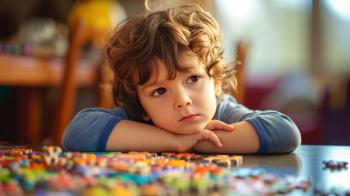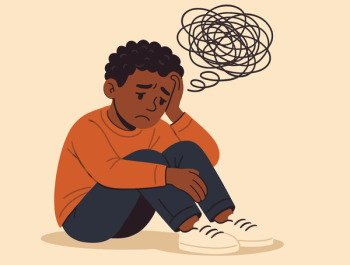
- Vol 37, Issue 7
- Volume 37
- Issue 7
The First International Congress on Infantile Psychiatry
Solving the problems of “troublesome” children throughout the ages.
Looking Back to Look Forward
This MONTH in PSYCHIATRY
The First International Congress on Infantile Psychiatry took place in July 1937, in Paris, France, as part of the International Exposition of Paris. Organized by leading French psychiatrist Dr Georges Heuyer, the Congress attracted participants from more than 20 countries, including Hungary, Austria, Belgium, Germany, England, Portugal, Italy, Spain, and Switzerland as well as from places further afield, including the United States, Canada, Brazil, and Egypt.1 The international success of the meeting attested to the vibrancy of a field that was itself barely beyond its infancy.
Interestingly, the first 45 volumes of the American Journal of Insanity (1844-1889) did not include a single article on
At first, most psychiatrists saw children’s mental difficulties as early manifestations of adult conditions. In 1911, Swiss psychiatrist Eugen Bleuler, MD, published his influential work on the schizophrenias, the conditions that Emil Kraepelin, MD, had included under dementia praecox.7 Bleuler believed that schizophrenia was rare in childhood, but 4% of the cases he knew had an onset in children younger than 15 years.8
Other conditions seemed to affect even infants. During the first decade of the 20th century, Italian psychiatrist Dr Sancte de Sanctis postulated the existence of a dementia praecocissima, which appeared in infants around two years of age. The Viennese psychologist and educator Theodor Heller, PhD, coined the term dementia infantilis for a condition that also afflicted young children.8 By the time Johns Hopkins University psychiatrist Leo Kanner, MD, published his 1935 Child Psychiatry textbook, the first of its kind in the English language; the volume ran more than 500 pages.
In Paris, delegates from many countries debated all sorts of children’s behavior maladjustments in 4 sections: general psychiatry, school psychiatry, forensic psychiatry, and discussions. Psychiatrists deliberated the significance of their contributions for pedagogues and for pediatricians, conscious that claiming legitimacy to treat a child’s mind required some negotiation.9 Swiss psychiatrist Jakob Lutz and French-American Louise Despert, MD, presented their work on childhood schizophrenia. Their subsequent publications listed numerous studies from colleagues in different countries about children who would later have various diagnoses ofschizophrenia or autism. This would become a lively area of research in the following decades.
The committee that organized the congress also created an international organization: the International Association for Child Psychiatry and Allied Professions. Swiss psychiatrist Moritz Tramer, MD, was elected permanent Secretary. The journal Zeitschrift für Kinderpsychiatrie that he had started in 1934 became the official publication of the organization.10[
The war divided many of the newly self-defined child psychiatrists politically and intellectually, and it also destroyed their ability to communicate with each other. Thus, the war had tremendous consequences for the field. It also had a far-reaching impact on the mental health of many children, which became a major focus of research in the postwar period.
Dr Vicedo is is Professor of History of Science, Institute for the History and Philosophy of Science and Technology, University of Toronto. She reports no conflicts of interest concerning the subject matter of this article.
References
1. Premier Congrès international de psychiatrie infantile, Paris, 24 juillet au 1er août 1937; 4 volumes. Lille: S.I.L.I.C. imprimerie; 1937.
2. Kanner L. Childhood psychosis: a historical overview. J Autism Child Schizophr. 1971;15:14-19. On the start of child psychiatry in the United States, see: Schowalter JE.
3. Maudsley H. The Physiology and Pathology of Mind. London: Macmillan; 1868.
4. Down JL. On Some of the Mental Affections of Childhood and Youth. London: J&A Churchill; 1887.
5. Manheimer M. Les Troubles Mentaux de L’Enfance: Précis de Psychiátrie Infantile. Paris: Société d’Éditions Scientifiques; 1899.
6. Jones K. Taming the Troublesome Child: American Families, Child Guidance, and the Limits of Psychiatric Authority. Cambridge, Mass: Harvard University Press; 1999.
7. Bleuler E. Dementia praecox oder Gruppe der Schizophrenien. Leipzig: Franz Deuticke; 1911, see: Kaplan RM. The name “schizophrenia” is heard worldwide. Psychiatric Times. April 16, 2020.
8. Parry-Jones W. Annotation: the history of child and adolescent psychiatry: its present day relevance. J Child Psychol Psychiatry. 1989;30:3-11.
9. Vicedo M, Ilerbaig J. Leo Kanner’s call for a pediatric-psychiatric alliance. Pediatrics. 2020;145:e20194047.
10. Schleimer K. The history of IACAPAPA: The International Association for Childe and Adolescent Psychiatry and Allied Professions. https://iacapap.org/content/uploads/History_of_IACAPAP-75-YEARS.pdf. ❒
Articles in this issue
over 5 years ago
Special Issues in Schizophrenia and Cancerover 5 years ago
Introduction: The Interface Between Psychiatry and Oncologyover 5 years ago
Valproic Acid: Overused in Bipolar Disorder?over 5 years ago
American College of Physicians Suggests Lead Health Care Reformover 5 years ago
Novel Insights on Cannabis and Psychosisover 5 years ago
Progressover 5 years ago
The Most Prevalent Psychiatric Disorder in Older AdultsNewsletter
Receive trusted psychiatric news, expert analysis, and clinical insights — subscribe today to support your practice and your patients.












